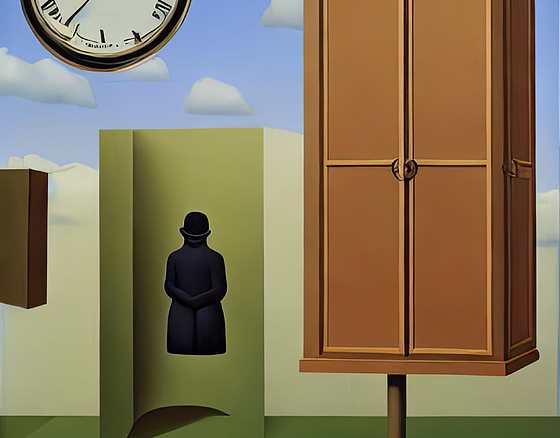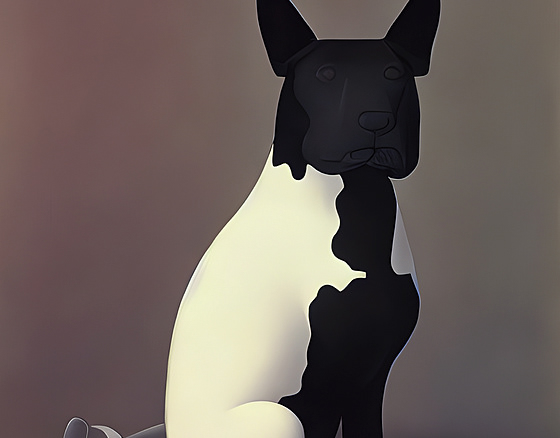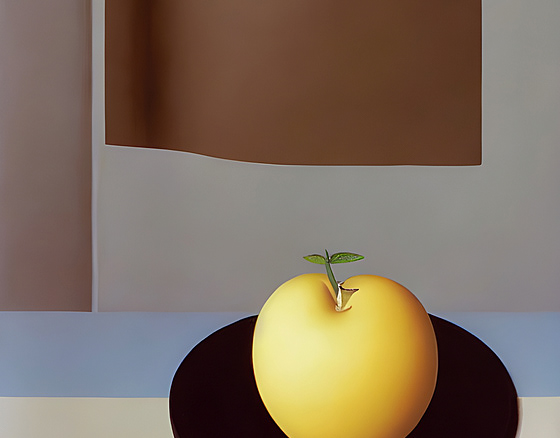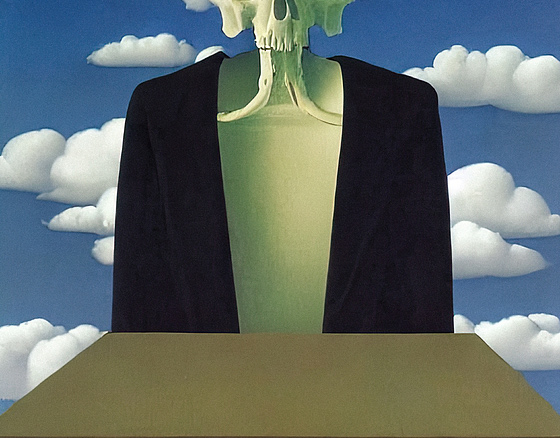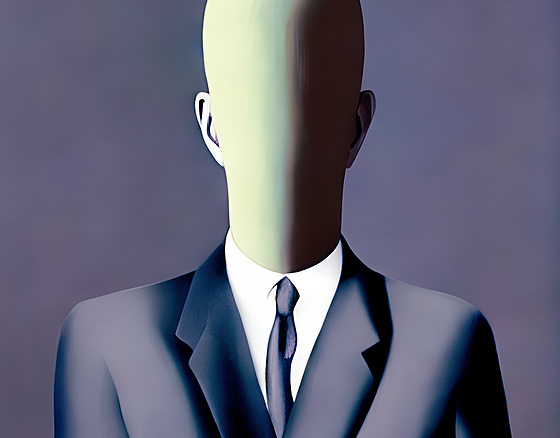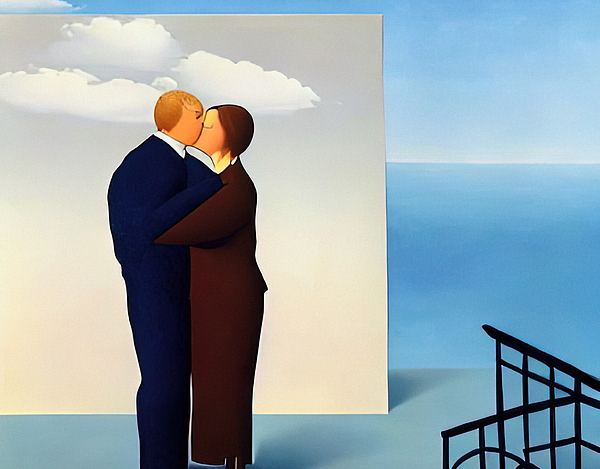The Soul Has Left the Building: A Surreal Exploration of Human Connection
Bob Orsillo’s “The Soul Has Left the Building” is a captivating and enigmatic piece of surreal art that delves into the complexities of human connection and the nature of identity. This painting, with its stark imagery and dreamlike atmosphere, evokes a sense of alienation, longing, and the fragility of human relationships.
At the heart of the painting are two faceless figures, their heads tilted towards each other in a gesture of intimacy. However, their expressions are devoid of emotion, their eyes vacant and their lips pursed. This juxtaposition of physical proximity and emotional distance creates a sense of unease and disconnection.
The figures’ heads, smooth and featureless, suggest a sense of anonymity and the loss of individuality. Their bodies, clad in dark suits, further emphasize their conformity and their adherence to societal norms. The bright red background, while visually striking, adds to the overall sense of alienation and isolation.
Interpretation and Symbolism
"The Soul Has Left the Building" can be interpreted on multiple levels. On a surface level, the painting may be seen as a commentary on the superficial nature of human interactions in modern society. The figures' lack of emotional connection suggests a world where people are more concerned with appearances and social status than with genuine human connection.
On a deeper level, the painting may be exploring the theme of identity and the self. The faceless figures may represent the loss of individuality and the fragmentation of the self in a world dominated by technology and consumer culture. The red background, often associated with passion and desire, may symbolize the emptiness and longing that underlies superficial relationships.
Orsillo’s Surrealist Approach
"The Soul Has Left the Building" exemplifies Bob Orsillo's signature surrealist style. Surrealism, a 20th-century artistic movement, aimed to tap into the unconscious mind and explore the irrational and dreamlike aspects of human experience. Orsillo's painting employs several surrealist techniques, including the juxtaposition of unrelated objects, the use of symbolic imagery, and the creation of a dreamlike atmosphere.
By combining these elements, Orsillo creates a visually striking and thought-provoking artwork that challenges our conventional understanding of reality and invites us to explore the depths of our own subconscious. "The Soul Has Left the Building" is a powerful reminder of the human capacity for both connection and alienation, and the importance of cultivating genuine human relationships.
Formal Analysis
The painting's composition is carefully constructed to create a sense of tension and unease. The two figures are placed close together, but their faces are turned away from each other, suggesting a disconnect. The use of strong, contrasting colors, such as the red background and the pale skin tones, further emphasizes this sense of tension. Orsillo's meticulous attention to detail, particularly in the rendering of the figures' faces, creates a sense of hyperrealism that is both fascinating and unsettling.
Conclusion
“The Soul Has Left the Building” is a powerful and thought-provoking artwork that invites viewers to reflect on the nature of human connection and the impact of technology on our relationships. Through its surreal imagery and symbolic language, the painting challenges us to consider the deeper meaning behind our interactions with others and to cultivate more authentic and meaningful connections. Orsillo’s masterful use of surrealist techniques ensures that this painting will continue to resonate with audiences for years to come.



